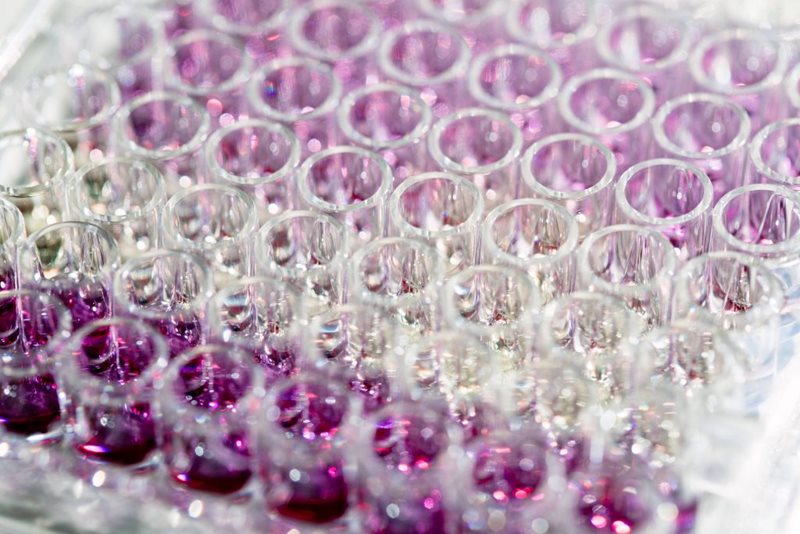RIKEN Develops Technique to Treat Multiple Types of Cancer
 Led by Katsunori Tanaka at the RIKEN Cluster for Pioneering Research (CPR) in Japan and Hiromitsu Haba at the RIKEN Nishina Center for Accelerator-Based Science (RNC), a team of researchers have successfully developed a groundbreaking technique with the potential to effectively treat various types of cancer. This innovative approach offers the advantage of fewer negative side effects compared to existing methods. The findings of their proof-of-concept study, published in Chemical Science, revealed that tumor growth in mice was significantly reduced by nearly threefold, and survival rates reached 100% following a single injection of a specially designed compound. This compound emits controlled amounts of alpha radiation within cancer cells, leading to their destruction while preserving healthy tissue.
Led by Katsunori Tanaka at the RIKEN Cluster for Pioneering Research (CPR) in Japan and Hiromitsu Haba at the RIKEN Nishina Center for Accelerator-Based Science (RNC), a team of researchers have successfully developed a groundbreaking technique with the potential to effectively treat various types of cancer. This innovative approach offers the advantage of fewer negative side effects compared to existing methods. The findings of their proof-of-concept study, published in Chemical Science, revealed that tumor growth in mice was significantly reduced by nearly threefold, and survival rates reached 100% following a single injection of a specially designed compound. This compound emits controlled amounts of alpha radiation within cancer cells, leading to their destruction while preserving healthy tissue.
The potential consequences of conventional chemotherapy and radiation therapy can be extremely harmful, and there is no assurance of complete eradication of all cancer cells, particularly when the cancer has metastasized and spread throughout the body. As a result, the primary focus of current research is to discover approaches that selectively target cancer cells, thereby limiting the impact of treatments to tumors exclusively. While certain targeted therapies have been developed, they are not universally applicable to all types of cancer. Tanaka emphasizes, "Our new method possesses a significant advantage in that it can treat various forms of cancer without the need for targeting vectors like antibodies or peptides."
The latest approach relies on fundamental principles of chemistry and takes advantage of the accumulation of a compound known as acrolein within cancer cells. In previous years, Tanaka's research team utilized a similar method to identify individual breast cancer cells. They employed a fluorescent compound that was attached to a specific type of azide, an organic molecule containing a cluster of three nitrogen atoms (N3) at one end. When the azide and acrolein come into contact within a cancer cell, they undergo a reaction, causing the fluorescent compound to bind to internal structures within the cancer cell. This technique serves as a probe, illuminating cancer cells within the body, as acrolein is almost non-existent in healthy cells.
In the recent study, instead of merely detecting cancer cells, the research team focused on selectively destroying those cells. The approach was relatively straightforward. Rather than linking the azide compound to a fluorescent substance, they connected it to a substance capable of killing a cell while minimizing harm to surrounding cells. Their chosen strategy involved utilizing astatine-211, a radionuclide that emits a small amount of radiation in the form of alpha particles during decay. Compared to other types of radiation therapy, alpha particles are particularly potent, but their range is limited to approximately one twentieth of a millimeter and can be effectively blocked by a sheet of paper. The idea was that when astatine-211 is anchored inside a cancer cell, the emitted alpha particles should cause damage primarily within the cancer cell itself.
Once the research team determined the optimal method of attaching astatine-211 to the azide probe, they conducted a proof-of-concept experiment to test their hypothesis. They implanted human lung tumor cells into mice and examined the treatment's effects under three conditions: direct injection of astatine-211 into the tumor, injection of the astatine-211-azide probe into the tumor, and injection of the astatine-211-azide probe into the bloodstream. Without any targeting, tumors continued to grow unabated, and the mice did not survive. As expected, when the azide probe was employed, tumor growth was significantly reduced, with tumors growing nearly three times less in size. Moreover, a higher number of mice survived the treatment—100% when the probe was injected into the tumor and 80% when injected into the bloodstream.
According to Tanaka, "We have discovered that a single tumor injection containing just 70 kBq of radioactivity can be incredibly effective in targeting and eliminating tumor cells. Remarkably, even when administering the treatment compound into the bloodstream, we have achieved comparable outcomes. This breakthrough implies that we can utilize this approach to treat early-stage cancer, even without prior knowledge of the tumor's location." The fluorescent probe variant of this technique is currently undergoing clinical trials to enable visualization and diagnosis of cancer at the cellular level. Our next objective is to establish a partnership and commence clinical trials utilizing this novel method for cancer treatment in human patients.